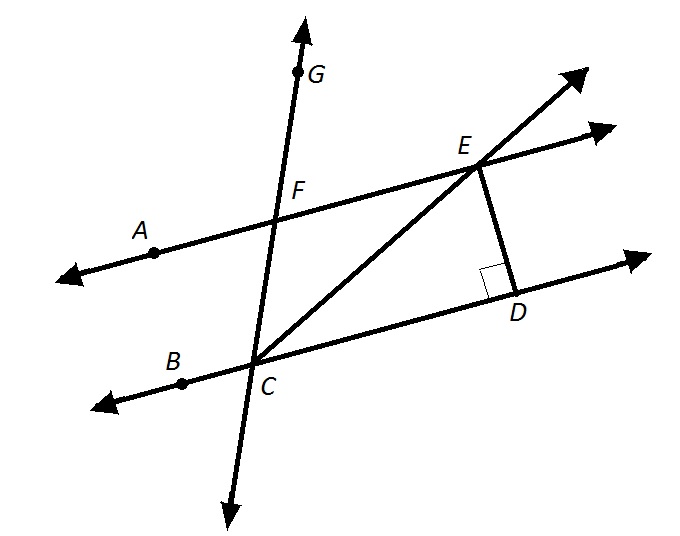All GED Math Resources
Example Questions
Example Question #1 : Supplementary Angles

Refer to the above diagram.










Example Question #2 : Supplementary Angles
Angles A, B, and C are supplementary. The measure of angle A is 



Since angles A, B, and C are supplementary, their measures add up to equal 180 degrees. Therefore we can set up the equation as such:
-or-
Combine like terms and solve for 
Example Question #3 : Supplementary Angles
Angles A and B are supplementary. The measure of angle A is 


No solution
Since angles A and B are supplementary, thier measurements add up to equal 180 degrees. Therefore we can set up our equation like such:
-or-
Combine like terms and solve for 
Example Question #4 : Supplementary Angles
Angles A, B, and C are supplementary. The measure of angle A is 


No solution
Since angles A, B, and C are supplementary, their measures add up to equal 180 degrees. Therefore we can set up an equation as such:
-or-
Combine like terms and solve for x:
Plug 

Example Question #491 : Geometry And Graphs
If a set of angles are supplementary, what is the other angle if one angle is 
Two angles that are supplementary must add up to 180 degrees.
To find the other angle, subtract 101 from 180.
The answer is:
Example Question #2 : Supplementary Angles
What angle is supplementary to 54 degrees?
Supplementary angles must add up to 180 degrees.
To find the other angle, we will need to subtract 54 from 180.
The answer is:
Example Question #5 : Supplementary Angles
If 

The sum of the two angles supplement to each other will add up to 180 degrees.
Set up the equation.
Solve for 
Divide by 10 on both sides.
Substitute 


The answer is:
Example Question #1 : Supplementary Angles
If the angles 


Supplementary angles sum to 180 degrees.
Set up an equation to solve for 
Substitute this value to 
The answer is:
Example Question #9 : Supplementary Angles
Suppose there are two angles. If a given angle is 
Supplementary angles add up to 180 degrees.
This means we will need to subtract the known angle quantity from 180.
Distribute the negative.
The answer is:
Example Question #10 : Supplementary Angles
If an angle given is 
Note that supplementary angles sum up to 180 degrees or equal to 
Subtract the known angle from pi.
The answer is:
All GED Math Resources










































































































